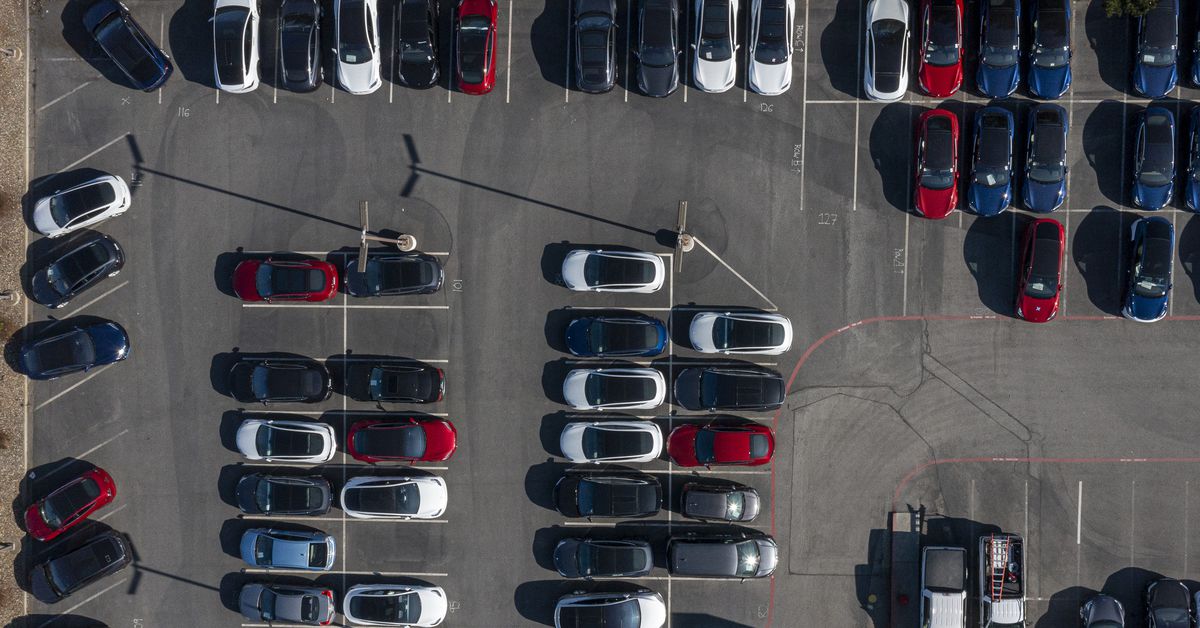During last night’s conference call with investors, Elon Musk brought up his all-time dorm night bong session: What if AWS, but for Tesla?
Musk, who loves to spout off profit forecasts, compared the unused computing power of millions of idle Tesla vehicles to Amazon’s cloud services business. If they’re just sitting there, he reasoned, why not put them to good use to power AI models? (Also, have you ever really looked at your hands? No, I mean really looked?)
“There is a possibility that distributed inference could actually be performed when the car is not moving,” Musk said. “Perhaps imagine the future where there is a fleet of 100 million Teslas and on average they have about one kilowatt of inference computing power. That’s 100 gigawatts of inference computing power distributed all over the world.”
In summary, buy a Tesla. It is your property. But Musk wants to freely use the unused computing power in your vehicle for… something? Possibly AI related? Hopefully not the blockchain. (Tesla is now an AI company, by the way. Musk said so himself during the call.)
Would Tesla pay you for it? Not clear
Would Tesla pay you for it? Not clear. After all, this is Musk at his most hypothetical. However, I wouldn’t trust him to simply try to take computing power away from his customers’ vehicles without consent or compensation. GM shared your driving information with insurance companies without your consent! Baby, it’s an all-rounder.
But before we can even consider this as a serious idea, we need to figure out whether it’s even possible. I reached out to Sam Anthony, the former chief technology officer at Perceptive Automata, a now-defunct company that built modules for self-driving cars to perform “theory of mind” tasks.
Anthony said that, conceptually, it is “quite possible” to divide large computing tasks across many small nodes. We’ve seen it with Bitcoin mining or Folding@home, a distributed computing project to develop new therapeutics. But just because something is possible doesn’t mean it’s a good idea.
Anthony said there are two main problems that make cars – and electric cars in particular – imperfect hubs for a distributed computing project. Firstly, you have to rely on the car’s battery or, if connected, the charging station’s power source for power. And this electricity is usually not free, as owners pay retail prices for the electricity. Second, connectivity and speed are a “big issue” in distributed computing, Anthony said.
“Inference in particular is part of it [machine learning] Workflow where your speed is crucial.”
“Inference in particular is part of it [machine learning] Workflow where your speed is critical,” he added. “You don’t do a bunch of offline inference overnight, you answer questions as they’re asked – that’s the big inference problem facing AI companies right now – what the connectivity and availability problems of cars (the… you know, moving) is an even bigger problem.”
In Musk’s view, the distributed network would only work when cars are parked or otherwise immobile. Still, Anthony argues that no one would voluntarily create a distributed computing architecture of millions of car ECUs (electronic control units) unless they were somehow forced to do so.
“It’s someone with a very strange-looking hammer imagining the existence of deeply implausible nails,” he said.
Computer scientists have certainly been trying to build fast computers out of lots of small, unused nodes for a very long time. One of the earliest examples was SETI@home, in which Berkeley researchers believed they could find alien life by using a volunteer network of distributed computers to analyze radio data. So why not a Tesla@home?
Computer scientists have certainly been trying to build fast computers out of lots of small, unused nodes for a very long time
Because the more geographically dispersed the nodes are, the harder it is to get them to work together, says Phil Koopman, a professor of electrical and computer engineering at Carnegie Mellon University and co-author of a book on supercomputers.
Like Anthony, Koopman acknowledged that the project could work as long as the vehicles were plugged in when computing to avoid battery drain. Good WiFi was also a necessary component, so the Tesla likely had to be parked at home overnight for the distributed network to function properly. But even then, you would likely face obstacles as you continue to develop the project to make it usable for AI computation.
“Scaling to this size is always a challenge and rarely succeeds to the extent that it is worth doing instead of building a data center,” Koopman said. “The devil is in the details, so I would like to see serious experimental confirmation that it is viable.”
Musk loves to pontificate about what’s possible in a future flooded with autonomous, connected vehicles. Things like a 24/7 robotaxi service that keeps your vehicle on the road, giving you passive income while you sleep sound great in theory. But when the rubber hits the road, Musk’s big ideas tend to run out of steam.
“It’s an interesting idea right now,” Koopman said, “but we have to remember that most cool ideas like this don’t turn out to be practical.”
